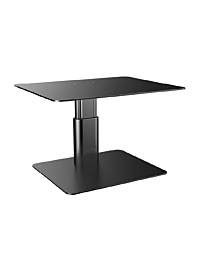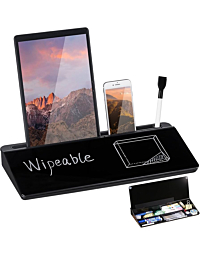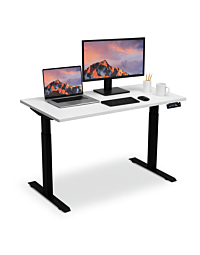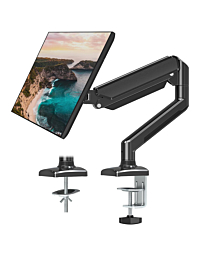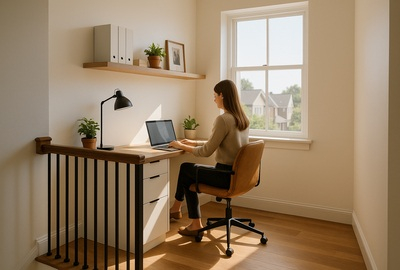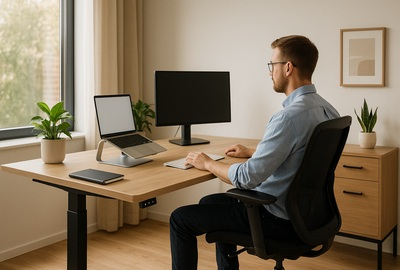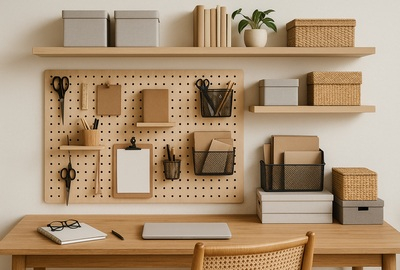- Creative Small Home Office Ideas for Your Spaces
- Creating a Functional Space
- Essential Furniture for Small Home Offices
- Optimising Desk Space
- Layout Options for Efficient Workspaces
- Modern Design Trends for Small Offices with Natural Light
- Tips for Optimising Storage with Floating Shelves in Limited Areas
- Setting Up a Bedroom Home Office Effectively
- Inspiring Small Office Decor Ideas
- Discover Your Perfect Small Office Setup Today!
Creative Small Home Office Ideas for Your Spaces
When space is limited, you have to get creative with your compact space. You may not have an entire room at your disposal, but there may be some underutilised areas of your home that you can commandeer, such as a home office nook in a closet, an alcove, or an empty space in your bedroom. The area in which you work is the first decision you’ll need to make when establishing your office, and it is an important one. Pick a place that is comfortable and free of distractions, as well as having enough room to work throughout the day. Factors such as the amount of light or street noise may also impact upon your decision.
As you will see further on in the article, furniture such as wall-mounted or fold-out desks can save a huge amount of floor space. Smart storage solutions such as packing containers, shelving units or pegboards, or even under-floor storage can enable you to keep your personal effects organised and minimise clutter.
Creating a Functional Space
Creating a functional space is crucial for a small home office. A functional space is one that is designed to meet your specific needs, taking into account the tasks you will perform, the equipment you will use, and the available space. By focusing on functionality, you can ensure that your home office is not only efficient but also a pleasant place to work.
Find a Dedicated Space
Finding a dedicated space for your home office is essential. This can be a small corner, a cozy nook, or even a transformed closet. Look around your home for any unused spaces or areas that can be repurposed as a home office. When selecting a space, consider factors like natural light, electrical outlets, and storage needs. Natural light can boost your mood and productivity, so try to position your desk near a window if possible. Ensure there are enough electrical outlets for your computer and other office equipment, and think about how you will store your office supplies to keep the area tidy and organised.
Define the Space
Defining your office space means creating a visual separation between your work area and the rest of the room. This can be achieved using various methods such as paint, rugs, curtains, or strategically placed furniture. For instance, you could use a different colour of paint or a stylish rug to delineate your office area. Curtains or room dividers can also create a clear boundary, helping to prevent clutter and create a sense of organisation. By defining your space, you can create a more focused and productive work environment.
Essential Furniture for Small Home Offices
When you have a small office, every single piece of furniture needs to be space-efficient while still serving its primary function. Here are some of the most essential items you will need: A built-in desk can be an excellent solution, combining creativity and functionality to maximise your workspace.
A Desk space
The most important item in any home office is the desk. It’s where you get all your work done and it serves as the focal point for your workspace. Since your working area is limited, you’re not going to want a huge, solid oak monstrosity, but rather something more compact and multi-functional to make the best use of your home. Just as crucial is selecting the right desk chair to complement your setup, ensuring both style and ergonomic benefits.
Desks that are wall mounted will maximise your space, as they reduce any gaps between the desk and the wall. And it’s always a good idea to buy a desk with built-in storage such as drawers or a filing cabinet.
An adjustable standing desk, such as the 1.2 Metre Sit Stand Desk Single Motor enables you to work in comfort without taking up a lot of room. Standing desks are proven to be excellent for maintaining posture and preventing physical health issues, and their position can be lowered for those times when you do need to sit down. Just make sure your desk is large enough to comfortably hold your computer and any other essential equipment.
A Chair
Even if you are using a standing desk, you’ll still need a desk chair for occasional sitting. Alternating between sitting and standing has been shown to boost your concentration and even burn calories during the working day. But remaining sedentary for long periods of time can lead to neck and back problems, as well as a whole host of other physical issues.
A comfortable ergonomic chair such as the Apex Office Chair will facilitate back support while sitting, as well as improving posture, increasing blood flow, and heightening productivity. You can’t put a price on your health, so it’s always better to spend a little more money on a quality, durable item.
A Computer
There are very few professions that do not depend on computer access these days. Even if your talents are analogue, such as artistry or teaching from home, you will most likely still need the internet to check emails, find customers, and manage your finances.
Depending on your career, your choice of computer could be anything from a small laptop to multi high-powered desktops. Make sure you have the space for this computer equipment as well any other accessories such as speakers, printers, and external hard drives.
Optimising Desk Space
Optimising desk space is critical for a small home office. A well-designed desk can help you make the most of the available space and improve your productivity. Here are some tips to help you optimise your desk space effectively.
Utilise Vertical Space
Utilising vertical space is an effective way to optimise your desk space. Consider using floating shelves, wall-mounted cabinets, or a desk with built-in storage to keep your office supplies and equipment organised and out of the way. Floating shelves can hold books, files, and decorative items, freeing up valuable desk space. Wall-mounted cabinets can store office supplies and equipment, keeping them within reach but off your desk. A desk with built-in storage, such as drawers or shelves, can help you keep your workspace tidy and organised.
Additionally, consider the following tips to optimise your desk space:
- Use a compact desk that fits the available space.
- Choose a desk with a built-in cord system to keep cables organised.
- Consider a desk with a built-in shelf or storage to keep office supplies and equipment within reach.
- Use a desk lamp to provide task lighting and free up space on the desk.
- Keep the desk surface clear of clutter and only keep essential items within reach.
By following these tips, you can create a functional and efficient workspace that maximises your desk space and enhances your productivity.
Layout Options for Efficient Workspaces
The way in which you lay out your home office is essential to its functionality. Transforming a tiny space, such as a small closet, into a functional office area can maximise the utility of limited square footage. There are numerous configurations that will allow you to maximise the available space while creating optimal conditions for productivity. Some examples include


 Buy Now, Pay Later
Buy Now, Pay Later Verified Rating
Verified Rating 
